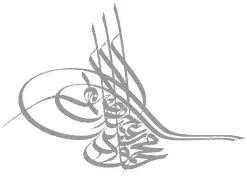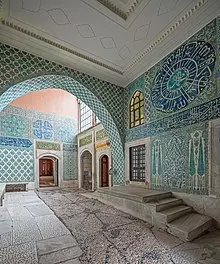The Ottoman Empire, known for its grandeur and influence, boasted a rich and diverse culture that evolved over several centuries. As the ruling administration of the Turks absorbed and adapted the various native cultures of conquered lands and peoples, a unique fusion of customs and traditions emerged. In this article, we will explore the vibrant visual and performing arts, languages and literature, sports, and culinary delights that defined the culture of the Ottoman Empire.
Visual Arts: Architecture, Miniature, Pottery, and Calligraphy
The visual arts of the Ottoman Empire were a testament to its grandeur and artistic prowess. It drew influences from various cultures, including Turkic, Greco-Roman, Arabic, and Persian. Ottoman architecture, a synthesis of Seljuk and Byzantine traditions, reached its pinnacle in large public buildings, such as mosques and caravanserais. The iconic Suleiman Mosque in Constantinople, designed by the esteemed architect Mimar Sinan, stands as a testament to the empire's architectural brilliance.
 Tile walls of the harem of the Topkapı Palace
Tile walls of the harem of the Topkapı Palace
The art of miniature painting, heavily influenced by Persian traditions, adorned manuscripts and albums. It incorporated elements of Byzantine illumination and painting. Calligraphy, with its prestigious status, became an integral part of Ottoman culture. The Diwani script, developed in the 16th and early 17th centuries, was renowned for its complexity and decorative style. Noted Ottoman calligraphers like Seyyid Kasim Gubari and Hâfiz Osman left a lasting impact on the art form.
Performing Arts: Shadowplay, Meddah, Dance, and Music
From captivating shadow plays to captivating musical performances, the performing arts of the Ottoman Empire delighted audiences throughout its reign. In the art of shadowplay, known as Karagöz, puppets were animated to tell stories and entertain crowds. This art form originated in China and found its way to the Ottoman Empire through the influence of Arabian and Persian cultures.
 Meddah performing at a coffeehouse
Meddah performing at a coffeehouse
The meddah, or story-tellers, mesmerized audiences with their engaging performances. They would skillfully manipulate their voices, imitate different dialects, and use props to bring their stories to life. Dance, an essential element of Ottoman culture, incorporated various folkloric traditions from different countries and regions. The Ottoman court had its unique style of music, known as Ottoman classical music, which combined vocal and instrumental elements. The military bands, known as mehterân, added another layer of musical expression to the empire's culture.
Languages and Literature: Ottoman Turkish, Poetry, and Prose
The Ottoman Empire, with its vast territories, encompassed diverse languages and literary traditions. Ottoman Turkish, the official language, was heavily influenced by classical Persian traditions. Persian loanwords found their way into the literary language, and classical court poetry drew inspiration from Persian forms. However, the 19th century saw a shift towards Turkish folk literature and European influences. Poets like Tevfik Fikret and Recaizade Mahmud Ekrem emerged as influential figures in modern Turkish poetry. Prose, though initially less developed than poetry, began to flourish with the growing influence of the European novel.
Sports: Oil Wrestling, Archery, Cirit, and Cuisine
Sports played a significant role in Ottoman society, both as a form of entertainment and a means of physical fitness. Traditional sports like oil wrestling, archery, and cirit (a horseback javelin-throwing game) were popular among the Ottomans. These activities showcased the empire's physical prowess and military expertise.
 The Harem Room, Topkapi Palace, carpet with a small-pattern "Holbein" design.
The Harem Room, Topkapi Palace, carpet with a small-pattern "Holbein" design.
The Ottoman cuisine was a delightful blend of various culinary traditions. Rice, a staple in high-status cookery, contrasted with bread, the staple grain for most of Anatolia. Turkish coffee, introduced from Levantine Arabic culture, became an integral part of Ottoman society. Other notable culinary delights included Turkish delight, baklava, kebab, and the refreshing yogurt drink, ayran.
Embracing the Ottoman Legacy
The Ottoman Empire left an indelible mark on history through its rich and diverse culture. The visual arts, performing arts, literature, sports, and cuisine of the empire continue to captivate and inspire. Let us embrace the legacy of the Ottoman Empire and appreciate the cultural tapestry it wove throughout its reign.

















